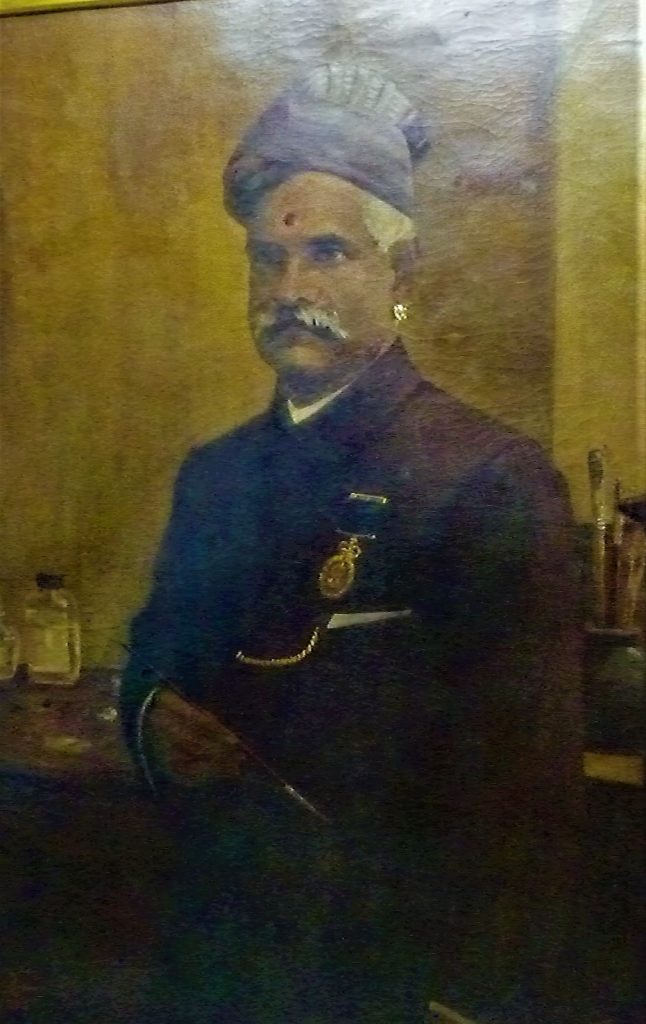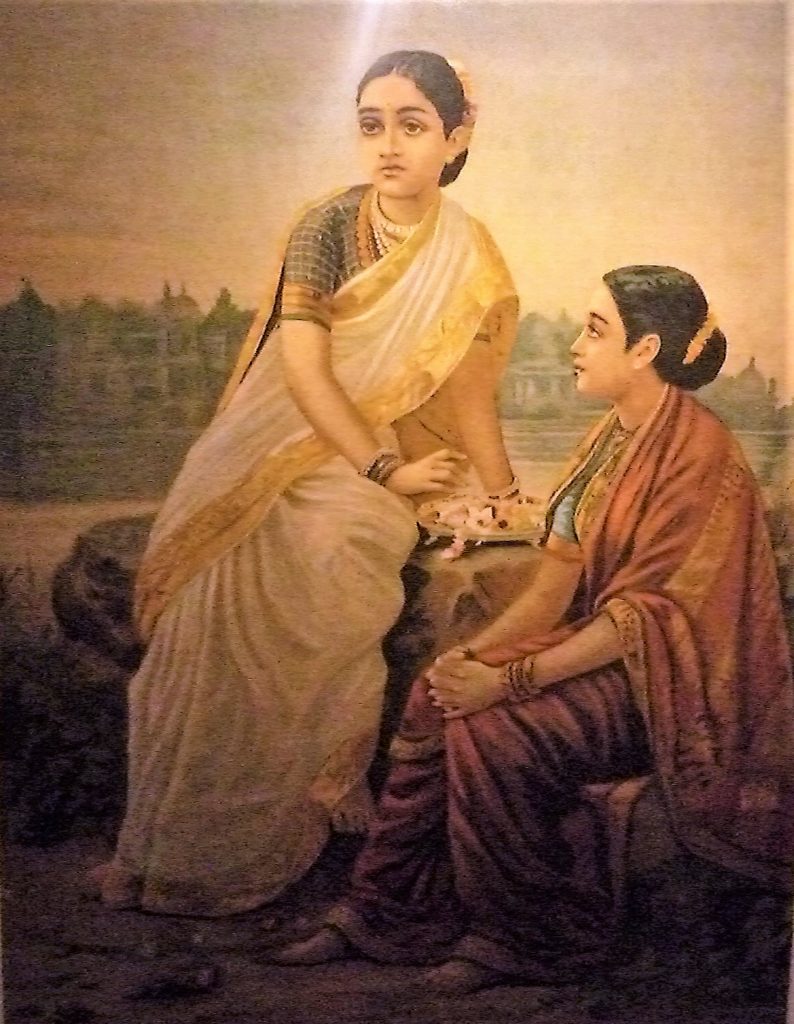The Life of Amrita Sher-Gil
Amrita Sher-Gil is a female pioneer of modern Indian art in what was formerly a male dominion (Sivan G 108). With a talent for hybridity in art, she incorporated Western techniques and visuals as well as Eastern. Her personality was one of confidence, blunt, and comfortable promiscuity between men and allegedly women (Dalmia 33, 38: Mzezewa 2018, np); likewise, her paintings portrayed women as strong and powerful while capturing the “neglected” areas of a woman’s life (Sharma, Jha, & Gupta 254). She showed early signs of rejection of the patriarchy that would reflect in her life and her works. Sher-Gil was born in Budapest, Hungary to a Sikh philosopher father named Umrao Singh Sher-Gil Majithia, and an equally talented Hungarian mother named Marie Antoniette Gottesmann on January 30th, 1913 (“Cultural India”). According to Dalmia, Amrita was baptized in 1918 as a Roman Catholic and she was partly Jewish (11).
At the outbreak of World War One, the Sher-Gil family moved to Dunaharaszti in 1916. During this period of four years in the village life, Amrita showed interest in coloured crayons to copy toys around her and drew folk songs that her mother would sing to her (Dalmia 14: Sivan G 107). After moving back to Budapest briefly, political instability arose, and the family moved back to India in 1921. Despite her unfamiliarity with formal education, Amrita was enrolled in Santa Annuciata School in Florence, Italy in January 1924. Amrita rebelled against the Roman Catholic regime of the school with a nude portrait and withdrew, but was enrolled into another Catholic school in Simla, India to which she rebelled again (Dalmia 19-20). The Sher-Gil family stayed in India from June 1924 to April 1929.
In 1927, Amrita’s uncle Ervin Baktay encouraged her to move to Paris to develop her artistic skill as well as paint from live models (Dalmia 23-25). While in Paris between the period of 1930-1932, Amrita created over sixty paintings which were mostly of self-portraits and young women (Dalmia 31). Amrita attended the Ecole des Beaux Art from 1929-1934, which is associated with her interest in line and colour (Tillotson 59). In these Paris years, Amrita’s self portraits began to show a change in her personality as she became more confident. This is when she appears to have grown to become her own vivacious person, as well as becoming comfortable in her own sexuality. She began to long for India after five years of gaining new techniques in Paris, and subsequently left in 1934 for her ancestral home in Amritsar.
While back in India, she left behind her Western clothes and vowed to wear saris for the rest of her life (Dalmia 59). Her painting palette began to switch and contain recurring ideas since being in India. It is there in Simla where Amrita starts to depict the poverty in India. She moved to her family’s estate in 1936, but then began a tour of South India with Barada Ukil in which she visited the Ajanta and Ellora caves. (Dalmia 79). These cave paintings inspired some of her work in the future and seemed to have awoken something in her. The winning of the gold medal at the annual exhibition of the Bombay Art Society on January 15th, 1937 occurred when she was touring South India (Shakeel 9). This was also when she began to be noticed.
After travelling to two major temple complexes in India, Amrita was influenced by the religious life. In Trivandrum, she found inspiration in the colours of life. The Indian prince (maharaja) and the Prince’s wife (maharani) in Trivandrum sent for, then refused to buy Amrita’s paintings because they were not within the norm. Her artistic style never was within the norm, as she painted troubled women with expressions of oppression (Mzezewa 2018, np). She then ventured to Cape Comorin, where she stayed for eleven days, and incorporated her South Indian experiences into her paintings. After a visit to the Cochin frescoes, Allahabad, and Dehli, she returned to Simla and “regurgitated” her memories into paintings (Dalmia 86). In the year 1937, Amrita created what became known as the south Indian trilogy; hence Bride’s Toilet, Brahmacharis, and South Indian Villagers Going to the Market were created to encapsulate the exposure to form and colour Amrita saw in south India (Dalmia 91: Sivan G 117).
Amrita had become increasingly popular with a unique and identifiable style, and yet she felt as though people were misunderstanding her paintings. Her paintings were praised for showing Indian poverty with sympathy, but criticized for showing the countries’ bad side, or even aestheticizing the poor (Tillotson 68). Amrita’s sister Indira Sher-Gil got married in 1937, which caused Amrita’s paintings to stop as the house became engulfed in turmoil (Dalmia 99). Amrita ventured to Lahore for an art exhibition, where she met an important art critic whom she became close with, Dr. Charles Fabri. He, along with others, provided her with truth and criticism to improve her style.
After making two paintings in Lahore and feeling regenerated from the trip, she returned to her family estates and married her cousin Victor Egan. Her parents disapproved, but that seemed to make her more determined (Dalmia 108). Before Amrita and Victor were to be married in Budapest, Amrita got pregnant. Victor arranged for an abortion, which was carried out soon after. Amrita’s parents continued to be hostile and reluctant to the two, but Amrita and Victor persisted. The two made agreements in their marriage to not have children, to have a quiet wedding, and that Amrita was also allowed to see other men (Dalmia 112-114). Victor was called out to Kiskunhalas for military duty and sent for Amrita to come live with him, which she did. She also went with him when he moved to Lake Balaton, and then they moved back to Kiskunhalas where Amrita took to painting again.
With the rising of more political instability, Victor and Amrita left Hungary in June 1939 to Genoa and boarded a ship to Colombo. The couple finally reached Simla to live with Amrita’s parents, but her mother was extremely hostile to the couple. The couple were relieved when Amrita’s cousin Kirpal Singh Majithi invited them to live with him in Saraya but were unsatisfied in finding inspiration or work (Dalmia 122). Victor finally attempted to settle things with Amrita’s mother in 1940 after her relentless hostility to him, but to no avail. It was as if the turning point in Amrita’s relationship with her mother also made a turning point in Amrita. After a period of depression, Amrita’s spirits were lifted again. She now began to link form with context in her paintings with the help of the Mughals, who were Muslims who ruled over a large Hindu majority country. Amrita and Victor visited Sonepur Mela in Bihar and Amrita took to painting elephants, which began another turn to other life in Amrita’s paintings (Dalmia 138). And yet, Amrita began to feel herself become sad again even while practicing new art techniques like sculpturing. Amrita hit an artist’s block before her friend, Karl Khandalavala, came to visit but became stuck again when he left. She is said to have felt defeated and depressed, as though her artistic muse had gone. Things were not going good for either Amrita or Victor, so they set out to Lahore in 1941. Victor then moved back to Saraya, and Amrita moved from Lahore to Simla to find her sister Indira and her husband had taken up her art studio. After a fight with Indira over Amrita always being “in the limelight,” Amrita left without a single bag to her old friend Helen’s house (Dalmia 157).
By now, Amrita was a recognized original painter. Amrita left Simla in August 1941 for Saraya with Victor, then left again to Lahore in September. The couple found a place and Amrita enjoyed life again as the two met and congregated with intellectuals and artists. Finally comfortable, Amrita scheduled an exhibition in December of 1941. Amrita began to work on her final painting that depicted animal forms and the Indian landscape, though it was never finished. Two weeks before her exhibition, Amrita fell ill. Amrita had been sick with the Spanish flu, acute tonsillitis, and a sexual illness, but this was different (Dalmia 13, 35, 80). She died on December 5th at midnight from peritonitis after being visited by three doctors, one of which was her husband. She was only 28, leaving her “artistic voyage… unfinished” (Dalmia 173: Sharma, Jha, & Gupta 254). Her family decided to have a Sikh funeral for her on December 7th, 1941 and her body was cremated on the bank of the river Ravi (Shakeel 15). In her wake, many of her friends and family thought of her as she remained immortal in her works. There are allegations that she passed because of food poisoning, her husband not having enough knowledge to treat her, or a failed abortion (Dalmia 179-180: Mzezewa 2018, np).
The life on Amrita Sher-Gil can be described as incredibly ambitious, bold, and always changing. Her life was reflected in her art in that it was always shifting, whether leaning more to her European techniques, or to her Indian ideas. Amrita is described as having a “ferocity of mind and sharpness of tongue, combined with an unashamed openness about her own behaviour” (Zaman 2020, np). Her paintings portrayed early ideas of feminism in that it showed overshadowed women, and people who were oppressed. Her comfortability in her sexuality was also a bold notion in her time, and yet she was blunt and open. Some say it is narcissism, some say confidence. Overall, as said by Sivan G, Amrita was a significant, “volatile personality amongst the artists of colonial India” who shaped modern Indian art with her European and Eastern hybridity (106).
REFERENCES AND FURTHER RECOMMENDED READING
Britannica Academic (2013) “Amrita Sher-Gil.” Encyclopedia Britannica. Retrieved from https://academic-eb-com.ezproxy.uleth.ca/levels/collegiate/article/Amrita-Sher-Gil/599290#
Cultural India (2020) Amrita Sher-Gil: Fact Sheet. Retrieved from https:/www.culturalindia.net/Indian-art
Dalmia, Yashodhara (2006) Amrita Sher-Gil: A Life. New York: Penguin.
G., Sivan (2014) “Mimesis and Beyond a Major Philosophical Trend in Modern Indian Painting.” Shodhganga: Reservoir of Indian Theses: 103-129. Retrieved from http://hdl.handle.net/10603/80281
Mzezewa, Tariro (2018) Overlooked No More: Amrita Sher-Gil, a Pioneer of Indian Art. New York Times. No page numbers available.
Shakeel, Talat (1998) “Amrita Shergil and Bengal School of Painting.” Shodhganga: Reservoir of Indian Theses, pp. 1-113. Retrieved from http://hdl.handle.net/10603/110780
Sharma, Mandakini, Jha, Pashupati, and Gupta, Ila (2016) “Amrita Sher-Gill’s Paintings: A Cultural Evaluation.” THAAP Journal 2016: 254-265.
Tillotson, G.H.R (1997) “A Painter of Concern: Critical Writings on Amrita Sher-Gil.” India International Centre, Vol. 24, No. 4: 57-72. Retrieved from https://www.jstor.org/stable/23002294
Zaman, Sahar (2020) Amrita Sher-Gil: A Heroine of Two Nations. The Quint. Retrieved from https://www.thequint.com/lifestyle/amrita-sher-gil-a-heroine-of-two-nations-artist-india-pakistan-self-portrait-freedom-struggle-oil-paintings-canvas. No page numbers available.
Related Topics for Further Investigation
Ajanta Caves
Bengal Renaissance
Bombay Art Society
Brahmacharis
Bride’s Toilet
Cochin Frescoes
Ecole des Beaux Art School
Ellora Caves
Cultural Hybridity
Maharaja
Maharani
Marie Antoniette Gottesmann
Modern Indian Art
Santa Annuciata School
Sikh tradition
Three Girls
Umrao Singh Sher-Gil Majithia
Victor Egan
Noteworthy Websites Related to the Topic
https://en.wikipedia.org/wiki/Amrita_Sher-Gil
https://www.metmuseum.org/toah/hd/emit/hd_emit.htm
https://www.wikiart.org/en/amrita-sher-gil
Article written by: Allison Vonk (February 2020) who claims authorship of this content.



